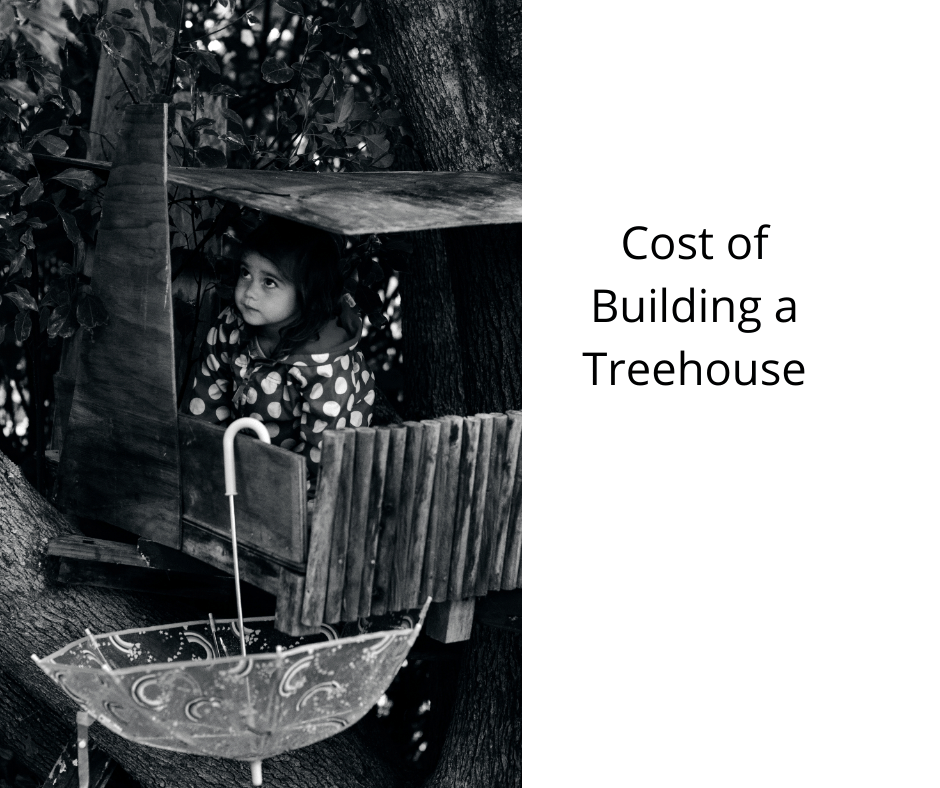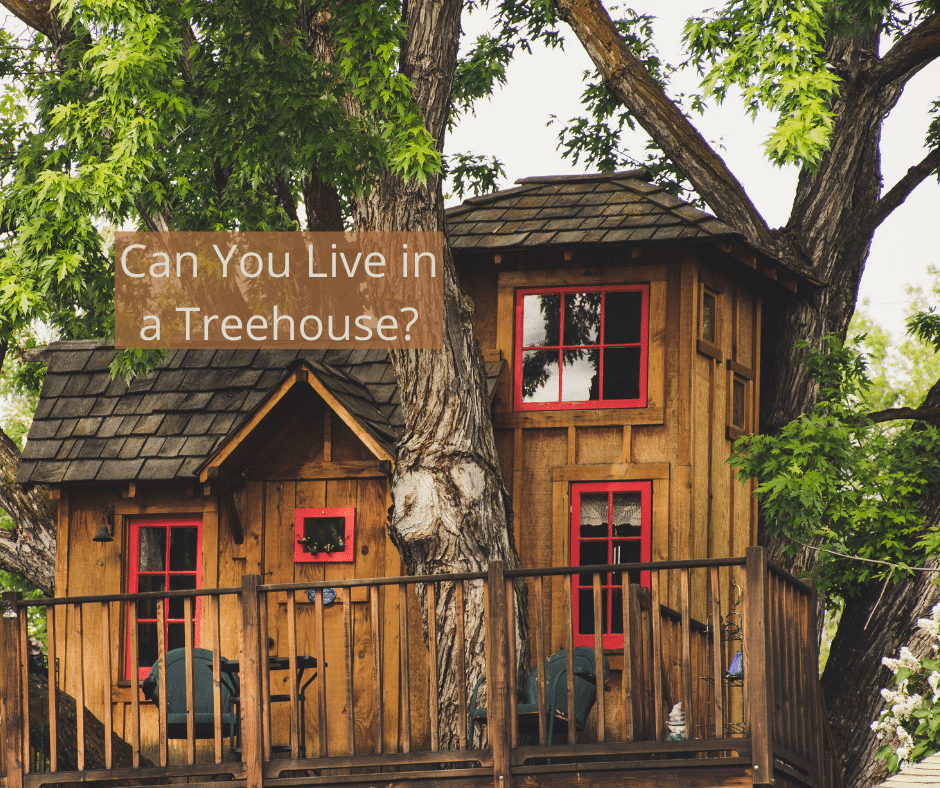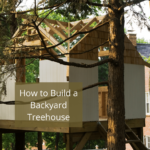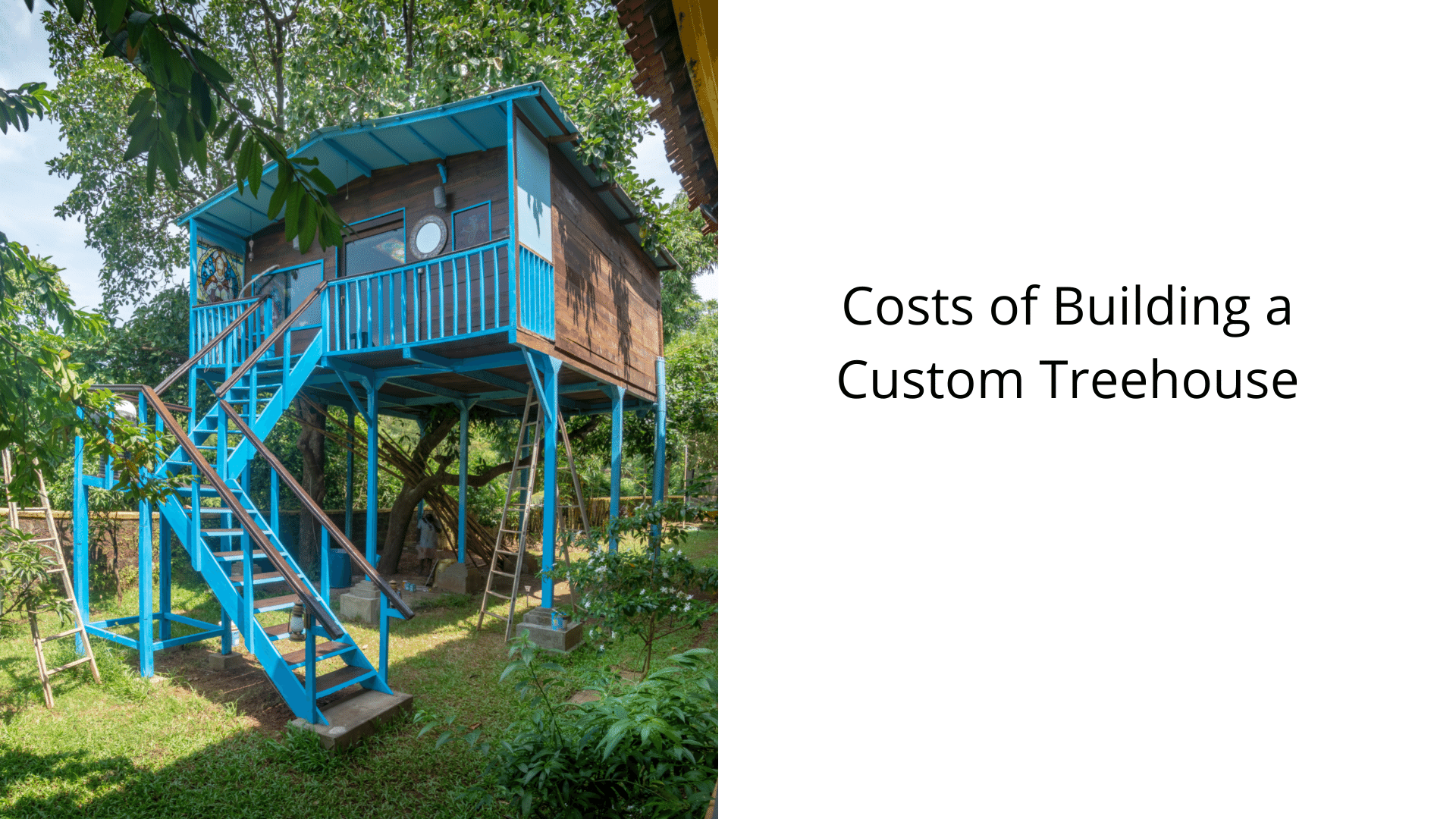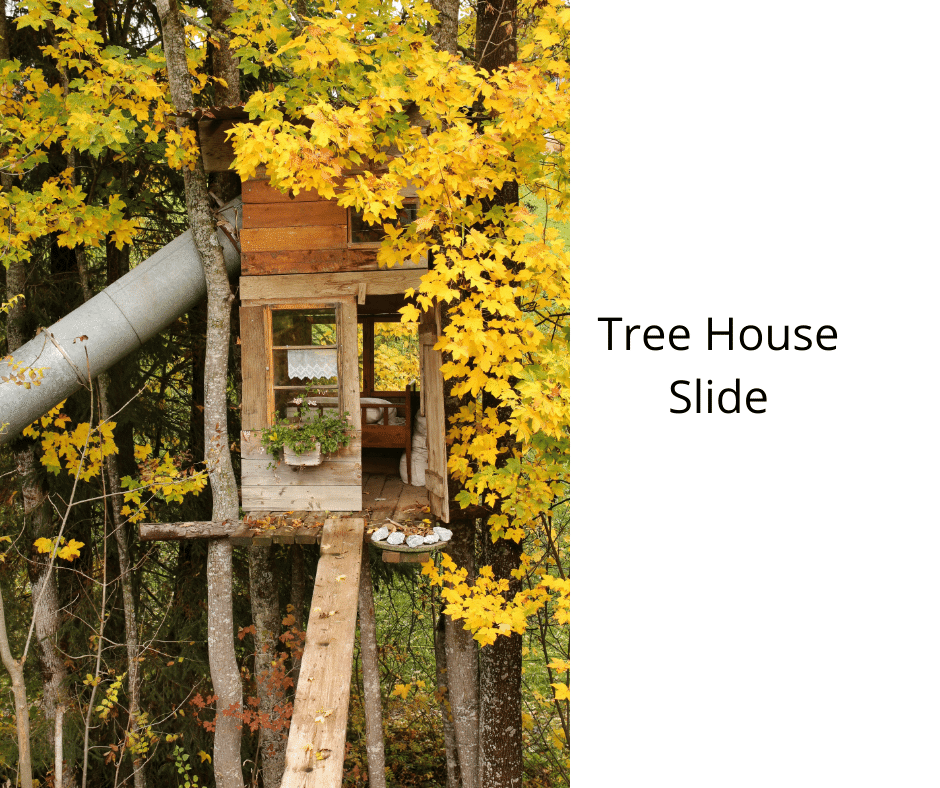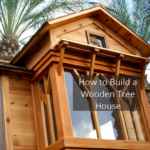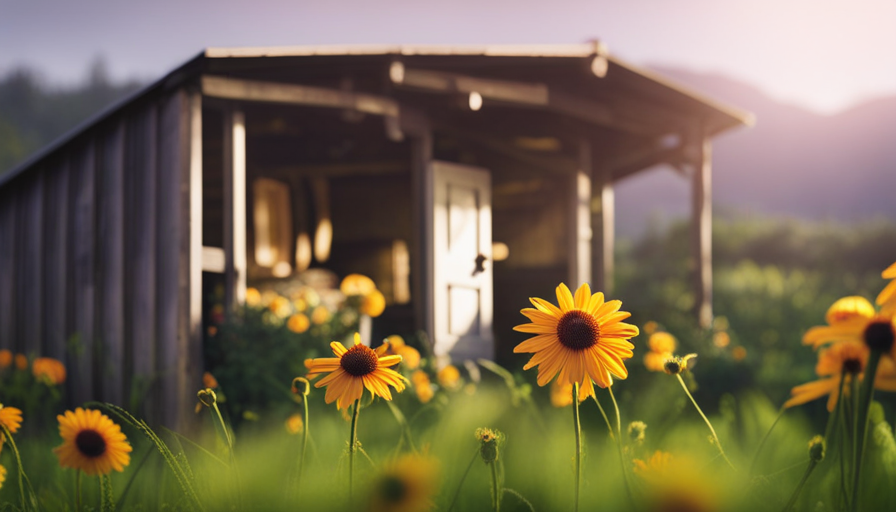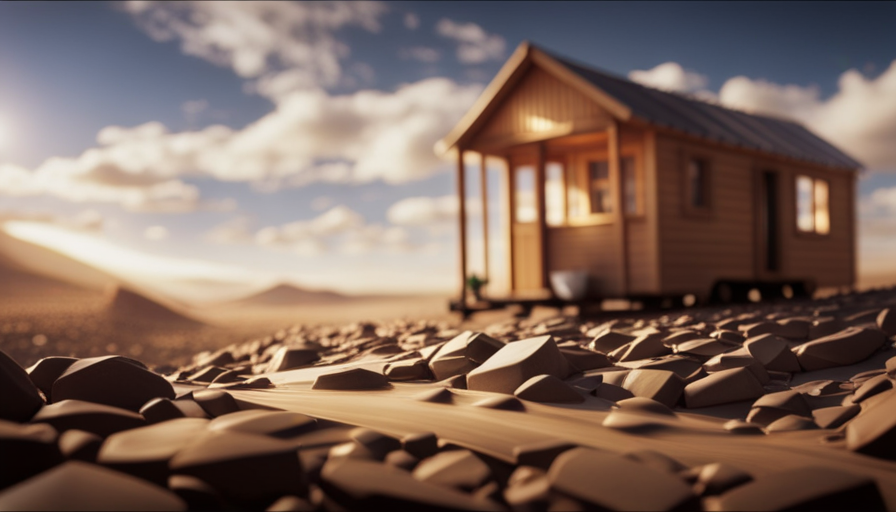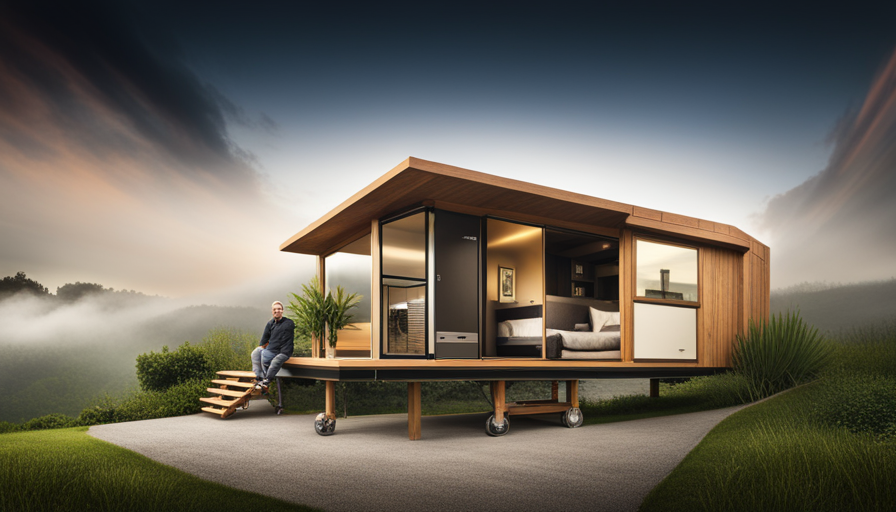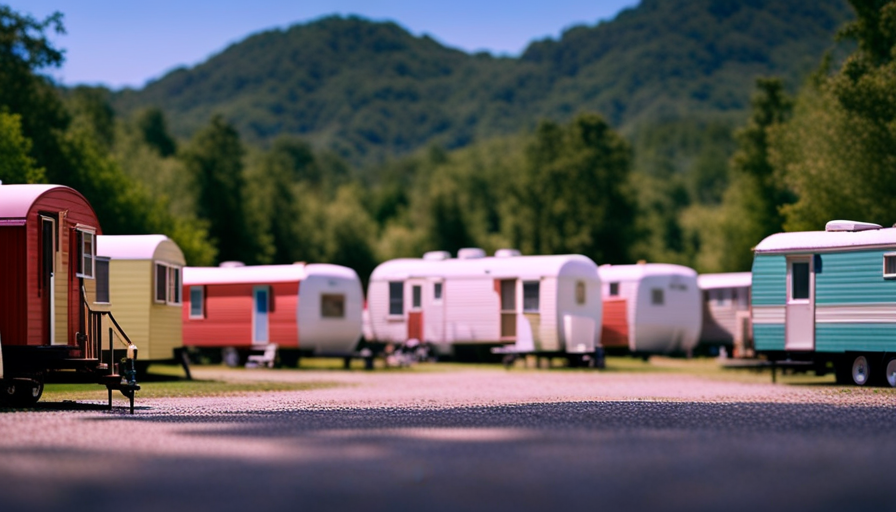The cost of building a treehouse can vary greatly, with the main expenses coming from materials, labor, permits, and the planning process. Materials alone can account for up to 40% of the total project cost. The cost of materials can vary depending on the type of wood, size, and finishes used for both the inside and outside of the treehouse. You have the option to purchase materials or create them yourself. Using scrap wood is the most cost-effective option, helping you save resources, preserve the wood, and create a beautiful natural piece of art for your family.
Variables in Cost of Building a Treehouse
Many variables will affect the cost of building a treehouse, including the size of the structure and the type of materials used. Using reusable products and composite wood can help you create affordable treehouses. Also, a higher build will require more engineering and safety precautions and take more time and money to complete. The price of a treehouse will increase as the height increases, and even a small difference can affect the cost.
If you’re considering building a treehouse with a roof, you’ll need to find a tree in your yard. There are different types of trees, and you’ll need to consult an arborist if you have any questions about the type of tree. In addition, check local zoning laws and HOA guidelines to ensure your treehouse will be safe. Finally, make sure you have homeowners insurance before you start building.
The costs of building a treehouse can range anywhere from $12,000 to $30,000, depending on how fancy you want it to be. Treehouse materials can range anywhere from four hundred to more than 1,000 euros. A permit can cost anywhere from one hundred to two thousand dollars, depending on the type of tree and the state where you live. In addition to the building materials, you will need to purchase tools and sandpaper for the project and wood waste to remove from your tree.
You can hire a professional treehouse builder to build your dream treehouse, but it may cost you a few thousand dollars more than if you build it yourself. A treehouse can cost anywhere from $400 to $11,000 in materials, with installation and removal costs adding another thousand dollars to the total. Most areas allow the building of a treehouse on private property, but you’ll need to check local codes.
Common Designs
Treehouses, also known as “tree forts,” are elevated platforms, often built around mature trees. They are a popular way to provide a temporary shelter or fun for children, and they can be designed in virtually any shape or size. They’ve become so popular over the last five years that commercial climbing parks have begun to feature them as bridge elements between high ropes courses. The following are some common designs for treehouses.
Ana White designed a treehouse in which the roof is angled to look like it’s floating in the air. Other treehouses are simple and modern. The design requires two tree trunks and heavy branches. For sides, the author used pressure-treated wood and recycled fence. Although this type of treehouse is not weatherproof, the author claims that it will stay dry inside. If you’re thinking of building your own, you’ll want to follow the basic guidelines to avoid making any mistakes.
As with any type of construction, it’s important to choose the right location for your treehouse. It should be at least ten feet off the ground. Place the treehouse near branches and landscaping, which will help distribute the weight evenly and protect the tree from additional stress. Also, be sure to position the treehouse so that it doesn’t block the sunlight. This will allow it to receive the maximum amount of natural light.
The material used for the roof and platform of your treehouse will dictate the design. Choose a tree that is healthy and has load-bearing branches that are eight inches in diameter. Oak, fir, beech, and maple are ideal choices. Be careful not to build your treehouse too high. The best option is to build it close to the tree trunk. This will allow air to circulate while avoiding damage caused by twisting. For additional stability, consider using laminated hardwood.
Materials Needed
To build a treehouse, you’ll need to gather the materials necessary to build it. Pressure-treated wood is common, and you can also build it from T1-11 siding, which is durable, stain-resistant, and looks great with trim. For a roof, you can choose from tarpaper or perforated roofing materials. You can also use sheet metal if you prefer. When choosing the tree, try to pick one that’s hardy and sturdy. Hardwood trees are the most commonly used for treehouses, but make sure you look at it for obvious damage before making the decision. Treehouses built with plywood will have a weak base and are prone to falling over in heavy snowfall.
After measuring the dimensions of the treehouse, you can begin to build the base. You should measure about one foot below the floor and one foot higher than the head. After positioning the base, use a framing nailer to attach the studs. Depending on the size of your tree, you can also add braces on the tree’s trunk to prevent the treehouse from wobbling. Once you’ve secured the supports, you can start to place the main flooring, doors, and windows. You can also make use of left-over lumber for trimming.
Before you start building, remember that it’s a good idea to check with your local council about the regulations regarding the construction of treehouses. In some areas, the height of the treehouse is restricted by homeowners’ associations or zoning laws. If you’re building a treehouse on a private property, you might need a permit for your construction. You should also check with your neighbours if they have any concerns or limitations.
Average Cost
The average cost to build a treehouse varies greatly. Costs include materials, labor, permits, insurance, and inspections. Other costs are related to the maintenance of the treehouse, such as pest control and painting. If you want to enjoy your treehouse for a long time, you should consider hiring an arborist to ensure the tree is in good condition. If you don’t have the time, you may also want to consider hiring a local tree service.
A well-built treehouse can cost several thousand dollars. The cost can be further inflated by including running water and electricity for appliances. Nelson estimates that 80 percent of tree-house projects include a kitchenette and bathroom. If you hire a contractor, you should expect to pay anywhere from $1,500 to $10,000 for the service. The size of the tree will also affect the cost. A large tree trunk will need a massive stem to support the structure.
In addition to the materials, the builder’s labor may add another three to six hundred dollars to your overall project. Tree removal and trimming fees will add up to another hundred dollars to your total price. Additionally, you should consider whether or not it is legal to build a treehouse on private property. In most states, treehouses are legal to build on private property but follow local building codes and laws.
Before you begin construction, you should check local building codes and HOA guidelines. If your treehouse will be visible to neighbors, consult with an arborist first. A treehouse can also be dangerous, so consider safety when designing and building it. For safety purposes, you should also ensure that you’re insured for any damage to the structure. If you decide to hire a professional to build it for you, have them check your homeowner’s insurance policy to ensure that you’re covered in case of any accidents.
Reclaimed Materials
Reclaimed materials are great for building a treehouse. If you know how to salvage lumber and other building materials, you can create a beautiful structure for much less than the price of a new one. A treehouse can be as luxurious as a standard home, but it is not as expensive as a new one. Building a treehouse will cost approximately the same as constructing a typical house, and some people use reclaimed materials to keep costs down.
The cost of building a treehouse depends on what materials you use. The cheapest options include ground contact pressure-treated lumber, furring strip board, and oriented strand board. While softwood is much cheaper than hardwood, it is not as strong and could weigh down the tree you choose to build it on. The cost of reclaimed materials is usually lower than new materials. Moreover, reclaimed materials can be used as flooring, walls, or roofing.
While some treehouses are inexpensive, others require more work. A basic treehouse has walls, roof, and decking. It is usually attached to the tree with tree bolts and a built-in ladder. The cost of building a treehouse is roughly $2,000 to $6,000. The cost of a treehouse depends on the size and complexity of the construction and the materials used. If you want a more luxurious treehouse, you will have to spend around $10,000 to $30000.
The cost of building a treehouse depends on the design style, the quality of the materials used, and the amount of work you’re willing to put in. A basic 10′ square treehouse with standard walls and a gable roof will cost about $4,000.
I’m Theodore, and I love tiny houses. In fact, I’m the author of Tiny House 43, a book about tiny houses that are also tree houses. I think they’re magical places where imaginations can run wild and adventures are just waiting to happen.
While tree houses are often associated with childhood, they can be the perfect adult retreat. They offer a cozy space to relax and unwind, surrounded by nature. And since they’re typically built on stilts or raised platforms, they offer stunning views that traditional homes simply can’t match.
If you’re looking for a unique and romantic getaway, a tree house tiny house might just be the perfect option.
